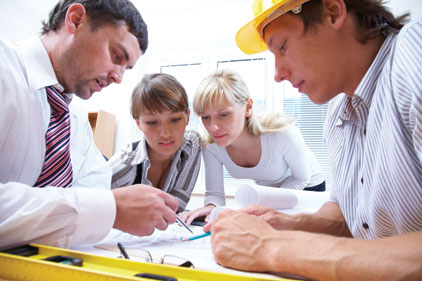In putting together his Top 10 trends for 2012, Yudelson said he took advantage of conversations with green building industry leaders in the United States, Canada, Europe, Asia, the Middle East, and Australia during the past year. Yudelson’s Top 10 Green Building MegaTrends include:
1. Green building in North America will rebound in 2012, using new Leadership in Energy and Environmental Design (LEED) project registrations as a proxy for this growth. The reduction in commercial real estate construction has not been offset by other sectors such as government construction, which continued to falter, and so the growth rate of new green building projects fell dramatically in 2010 and 2011. Even so, in 2011, LEED in new construction accounted for about 20 percent of all put-in-place space, with domestic LEED project registrations up almost 40 percent vs. depressed 2010 levels. However, Yudelson sees faster growth in green retrofits, and notes that ongoing college and university projects and non-governmental organization (NGO) activity are serving to backstop the fall in commercial and governmental construction. In addition, LEED growth has been and will be rapid in China and other fast-growing economies.
2. Green building will continue to benefit from the Obama administration’s strengthened focus on greening the executive branch, with its commitment to a minimum of LEED Gold for all federal projects and focus on major energy-efficiency renovations.
3. The focus of the green building industry will continue its switch from new building design and construction to greening existing buildings. One fast-growing LEED rating system the past two years has been LEED for Existing Buildings Operations and Maintenance (LEED-EBOM), with cumulative floor area in certified projects now greater than in new construction, and this trend is expected to increase in 2012.
4. Awareness of the coming global crisis in fresh water supply will increase, leading building designers, owners, and managers to take further steps to reduce water consumption in buildings by using more conserving fixtures, rainwater recovery systems, and innovative new onsite water technologies.
5. The global green building movement will continue to accelerate, as more countries begin to create their own green building incentives and develop their own green building councils. More than 90 countries with incipient or established green building organizations, on all continents, will drive considerable green building growth in 2012. Yudelson said, “We’re seeing strong growth in China, other places in Asia (e.g., Singapore), Brazil, Eastern Europe, South Africa, and the Arabian Peninsula countries. In 2011, for the first time, nearly as many LEED-registered projects were in progress outside the U.S. as in the U.S., up more than 50 percent compared to 2010 levels and representing 44 percent of all new LEED project certifications.”
6. Net zero energy buildings will become increasingly commonplace, in both the residential and commercial sectors. Developers of speculative commercial buildings will also begin to showcase net zero energy designs.
7. Performance disclosure will be the fastest emerging trend, highlighted by new requirements in California, Seattle, and other locations. Commercial building owners will have to disclose actual building performance to all new tenants and buyers, and in some places, to the public at large. This trend is already established in Australia, for example, and will spread rapidly as the easiest way to monitor reductions in carbon emissions from commercial and governmental buildings.
8. Green buildings will increasingly be managed in the “cloud,” as witnessed by the large number of new entrants and new products in the fields of building automation, facility management, wireless controls, and information management in 2011.
9. Local and state governments will step up their mandates for green buildings for both themselves and the private sector. Yudelson expects to see at least 20 new cities with commercial sector green building mandates, mostly in the “Blue” states. The desire to reduce carbon emissions by going green will lead more government agencies, universities, hospitals, and corporate owners to require green buildings from design and construction teams.
10. Solar power use in buildings will continue to grow with the prospect of increasing utility focus on aggressive state-level renewable power standards (RPS) for 2020. As before, third-party financing partnerships will continue to grow and provide capital for large rooftop systems such as on warehouses and big box retail stores. However, Yudelson expects that there will be fewer very large solar and wind systems, as federal grant and loan guarantee support begins to be phased out.
Yudelson Associates is a leading international firm in sustainability planning and green building consulting. Founder Jerry Yudelson, a professional engineer and LEED Fellow, is one of the nation’s leading green building and sustainability consultants. He is the author of 12 green building books. For more information, visit www.greenbuildconsult.com.
Publication date: 01/23/2012


Report Abusive Comment